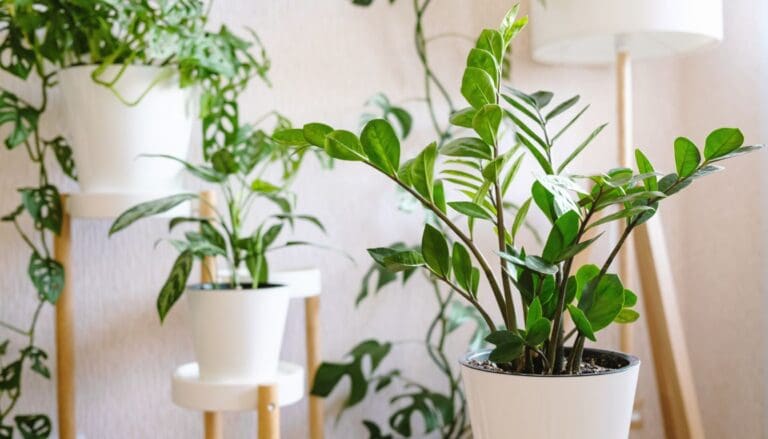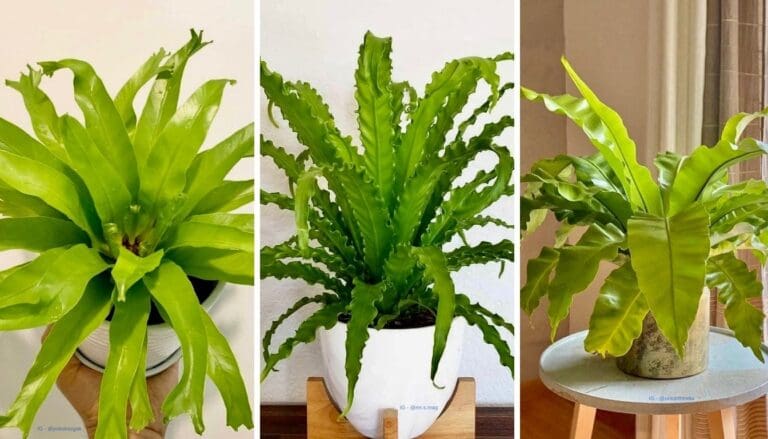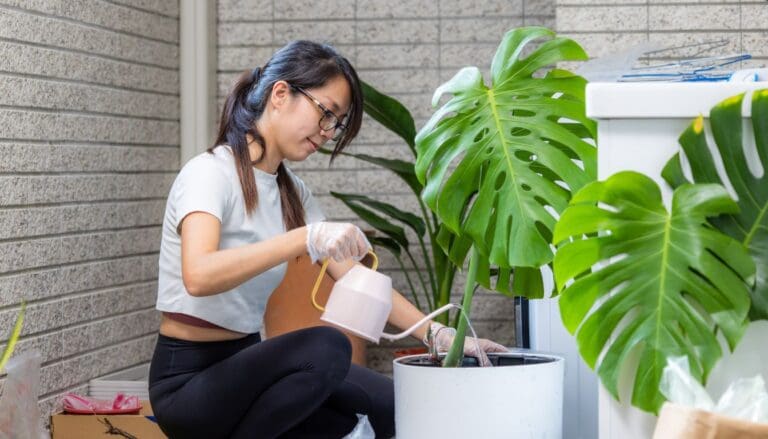4 Summer Watering Mistakes You’re Probably Making and How to Fix Them
Watering my garden in summer sounds easy, right? But honestly, it’s just as easy to mess it up without realizing.
The hot sun and those long days? They dry out the soil fast, so water matters more than ever.
With a few simple changes, I can keep my plants healthy and avoid wasting water. Staying alert to common watering mistakes helps me squeeze the most out of my garden all summer.
Please note: Simplify Plants is reader-supported. As an Amazon Associate, I earn from qualifying purchases made by our readers with no extra cost added to you all! Some links in the post are affiliate links and I get a commission from purchases made through links in the post.
1) Watering in the heat of midday

I used to think watering my garden at noon was smart. Turns out, watering when the sun’s blasting isn’t great for plants.
The water just evaporates in the heat. Most of it never even reaches the roots.
I’ve seen the soil dry out almost instantly when I water at midday. Instead of helping, my plants end up looking tired or stressed.
Midday watering can leave water spots on leaves. Sometimes, the combo of sun and water will even scorch them.
Now, I skip the hottest hours. Early mornings or late evenings are way better since the sun isn’t as harsh.
When I water then, more of it actually gets to the roots. My plants perk up, and honestly, I do too.
It’s just nicer to work outside when it’s not sweltering. Watering in the morning or evening is less of a chore and way better for the garden.
If I’m busy, I’ll set a reminder or use a watering timer. That way, my plants don’t get forgotten.
Just switching up when I water? It’s a game changer. Plants look happier, and my lawn stays greener when I skip the midday sun.
2) Overwatering newly planted seedlings
When I plant new seedlings in summer, it’s tempting to drown them in water. But too much water can actually harm those fragile roots.
Seedlings need moisture to get started, but they also need some air. If the soil’s always soggy, roots can rot or just stop growing right. I poke my finger into the dirt—if it’s still damp a couple inches down, I hold off.
Watering again and again because it’s hot? That just leads to weak, shallow roots that struggle when the heat really kicks in.
Instead, I water deeply but not too often. This way, roots grow stronger and dig deeper.
I also avoid watering late at night. Wet soil sitting overnight, especially if it’s cool, is just asking for trouble.
Watering early gives seedlings the best chance to soak up what they need. Paying attention to how much water they actually want makes a big difference.
3) Ignoring soil moisture before watering

I used to think daily watering was a must during hot spells. But soil moisture changes all the time—weather, plant type, even where the plant is in the yard can make a difference.
If I don’t check, I could be overwatering or underwatering without knowing it.
Too much water can be just as rough as too little. When I water blindly, roots might rot or just stop thriving.
Now, I always check the soil first. I stick my finger in about an inch—if it’s dry, I water. If it’s still damp, I wait.
Some plants like their soil to dry out a bit before getting more water. Veggies usually want more, but it really depends.
Taking a minute to check saves water and keeps my plants in better shape. Healthy roots = a happier garden, at least in my experience.
4) Using a sprinkling can instead of a drip system
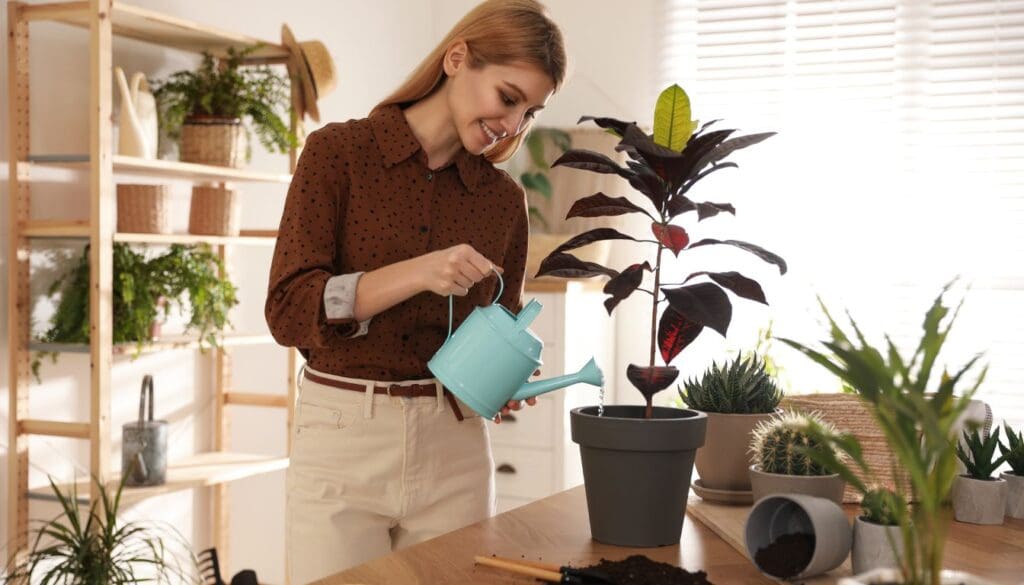
I used to swear by my sprinkling can. It felt easy, and I thought I was doing each plant a favor.
But honestly, water from a can doesn’t always get down to the roots. The top looks wet, but the deeper soil can stay bone dry.
Drip systems are a total upgrade. They send water right to the roots, where it counts. Plus, there’s less waste—no splashing, hardly any evaporation.
Once I switched, my plants looked so much better. No more wilting leaves, and the soil stayed damp way longer.
Drip systems are pretty simple to set up. I just laid out the hoses near the base of my plants and hooked them to a timer.
If you’re only using a sprinkling can, your plants might be thirstier than you think—especially in summer. Switching to a drip system saves time, effort, and your plants will thank you.
How Weather and Soil Type Affect Summer Watering
Summer heat and soil type both totally change how and when I water. Spotting watering problems early helps me keep things green without wasting water.
Adjusting Watering for Heatwaves and Drought
During a heatwave, I water more deeply but not as often. That way, roots grow deeper and stay cooler.
When it’s super dry for days, I check the soil a few inches down with my finger. If it’s dry there, it’s time to water.
Soil type really matters. Sandy soil dries out fast, so I water more often but use less each time.
Clay holds water, so I have to be careful not to overdo it. Here’s a little cheat sheet I use:
| Soil Type | How Often to Check | Watering Tip |
|---|---|---|
| Sandy | Every 1-2 days | Smaller, more frequent watering |
| Clay | Every 3-4 days | Deep, infrequent watering |
| Loamy | Every 2-3 days | Moderate, consistent watering |
I always aim to water early or late so less water just vanishes into the air.
Recognizing Signs of Overwatering and Underwatering
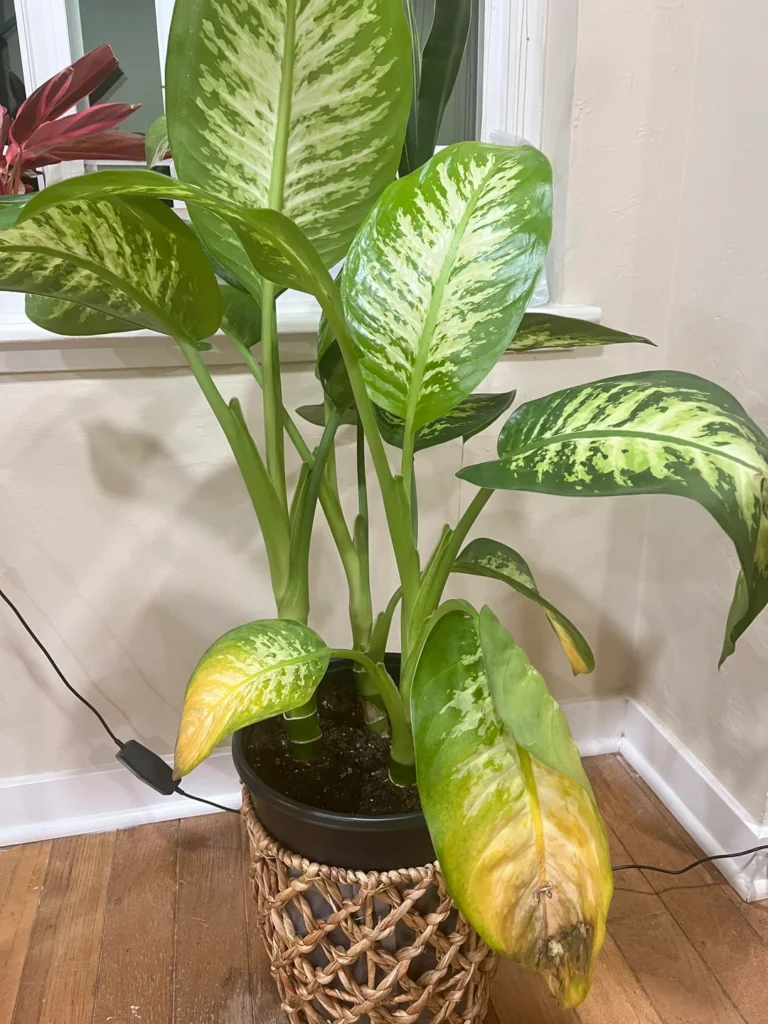
Overwatering is just as bad as underwatering, maybe worse. I look for yellowing leaves, mushy stems, or standing water in pots.
Underwatering shows up as wilting, crispy edges, or leaves that just look sad. If my plants are droopy even after sunset, they probably need a drink.
I try to notice changes in leaves and stems. Adjusting my watering before things get bad keeps the garden looking good.
Choosing the Right Time of Day to Water
When I water matters just as much as how much I use. The wrong timing can really mess with plant health, water bills, and how my yard looks.
Morning Versus Evening Watering
Watering in the morning is my go-to for most plants and lawns. The cool air lets the water soak in before the sun gets fierce.
I’ve noticed watering early also helps keep fungal diseases away. Leaves dry out before night, so there’s less chance for disease to spread.
I try to finish watering by 9 a.m. After that, a lot just evaporates.
Evening watering seems tempting, but I’ve had issues with mold and mildew when leaves stay wet overnight.
| Time of Day | Best Practice | Problems |
|---|---|---|
| Morning | Water before 9 a.m. | Less evaporation, healthier plants |
| Evening | Avoid if possible | Higher risk of plant disease |
Frequently Asked Questions
Summer watering isn’t just about guessing and hoping for the best. I’ve learned the hard way that timing and technique matter.
How often should I water my garden during hot summer days?
I check the soil before watering. Usually, my garden needs water every 1-2 days in the heat, but it depends on the plant.
I make sure the soil is moist about 1-2 inches down—not waterlogged.
Can watering my plants at night cause any issues?
Watering at night can lead to mold and fungus since water sits on the leaves and soil longer. I stick to mornings.
What’s the best time of day to water plants in the summer to ensure they stay healthy?
Early morning is best. I water just after sunrise so the water can soak in before things heat up.
Are there signs that I’m overwatering my lawn in the summertime?
Yep. If my lawn looks yellow, feels soggy, or I spot mushrooms, I’m probably overdoing it.
Overwatering can rot the roots. I always check the soil first.
What techniques can I use to conserve water while still keeping my garden hydrated?
I use a drip system and mulch to lock in moisture. Both save water and keep my plants happy.
How can I tell if my plants are receiving too much or too little water in the heat?
If my plants’ leaves are turning yellow or wilting while the soil still feels damp, that’s usually a sign I’m overdoing it with the watering. Dry, crispy leaves paired with soil that feels bone dry? That’s my cue to grab the watering can.
Honestly, I just poke my finger into the soil before watering—sometimes it’s surprising how much you can tell by touch alone.
Recommended Garden Supplies
| Product Image | Our Recommended Gardening Supplies | Check Offers! |
|---|---|---|
Top Top
Top
Top
Top
Top
Top
Top
Top | rePotme Houseplant and Tropical Classic Potting Soil Mix | Check Offer On Amazon |
 Top
Top
Top
Top
Top
Top
Top
Top | Espoma Organic Indoor Plant Food | Check Offer On Amazon |
 Top
Top
Top
Top
Top
Top
Top
Top | GooingTop LED Grow Light 6000K Full Spectrum Clip Plant Growing Lamp | Check Offer On Amazon |
 Top
Top
Top
Top
Top
Top
Top
Top | Soil Moisture Meter | Check Offer On Amazon |
 Top
Top
Top
Top
Top
Top
Top
Top | Govee Hygrometer Thermometer, Bluetooth Enabled! | Check Offer On Amazon |
 Top
Top | LEVOIT Humidifiers for Large Room(Best For Plants) | Check Offer On Amazon |
 Top
Top
Top
Top
Top
Top
Top
Top | Upgraded DIY Automatic Drip Irrigation Kit, 15 Potted Houseplants Support | Check Offer On Amazon |
 Top
Top
Top
Top
Top
Top
Top
Top | Stainless Steel Heavy Duty Gardening Tool Set | Check Offer On Amazon |
 Top
Top
Top
Top
Top
Top
Top
Top | Bonide Insecticidal Soap | Check Offer On Amazon |
 Top
Top
Top
Top
Top
Top
Top
Top | Bonide 32 oz Spray Neem Oil for Organic Gardening | Check Offer On Amazon |
 Top
Top
Top
Top
Top
Top
Top
Top | Garden Safe Fungicide | Check Offer On Amazon |



